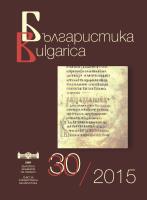
Дисертации
Defended PhD theses in Bulgaria in the field of linguistics, literature, history, folklore, ethnography and art studies
More...We kindly inform you that, as long as the subject affiliation of our 300.000+ articles is in progress, you might get unsufficient or no results on your third level or second level search. In this case, please broaden your search criteria.

Defended PhD theses in Bulgaria in the field of linguistics, literature, history, folklore, ethnography and art studies
More...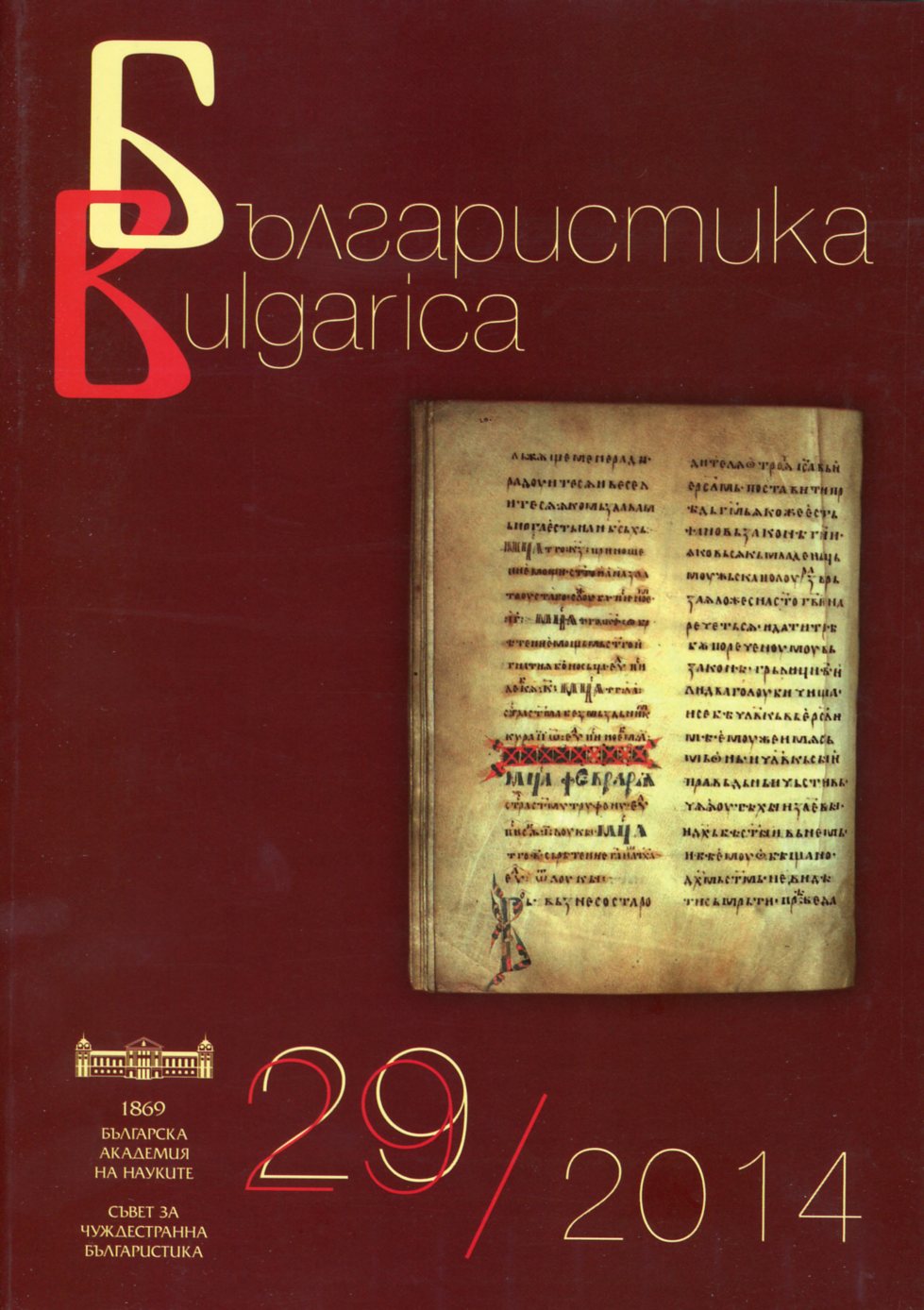
Defended PhD theses in Bulgaria in the field of linguistics, literature, history, folklore, ethnography and art studies
More...
Data about scientific events in the field of the humanities in Bulgaria in 2014
More...
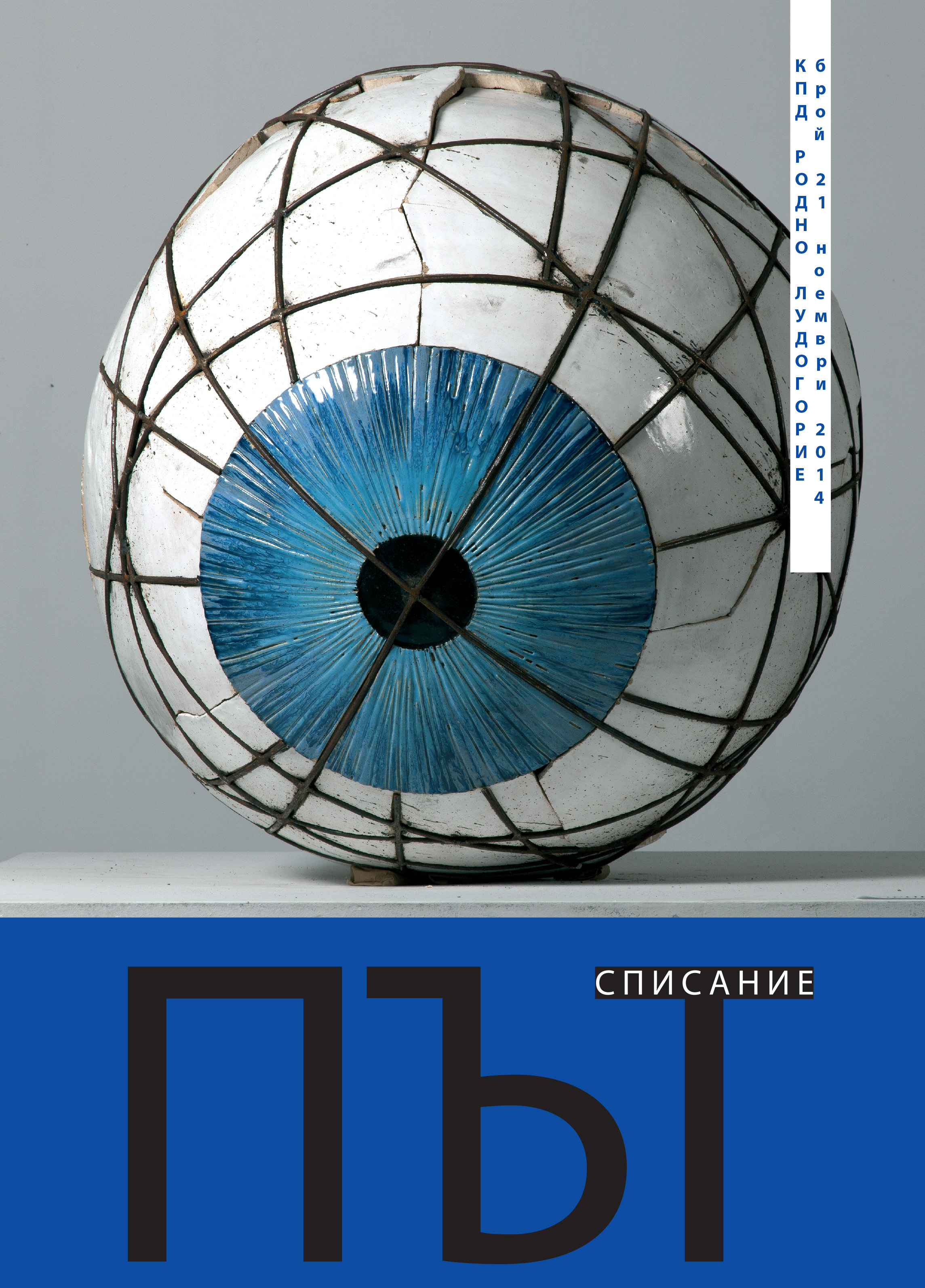
Prof. Desislava Mincheva is presenting the exhibition of Emil Bachiyski.
More...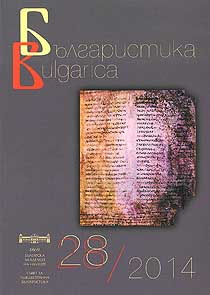
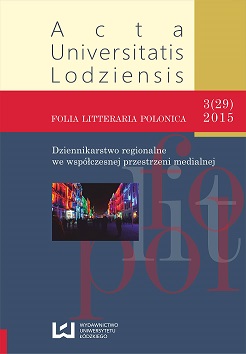
This article attempts to capture the phenomenon of Lodz Television Theatre and to reveal changes in it over the years, i.e. from the foundation of the ŁOT Television Theatre up to the 1990s, when the production of such performances ended at the Lodz Television Centre.
More...
In the text, the author describes the speci cs of the regional radio documentary, and discusses the themes and characters that appear in documents from PR Lodz. The author proposes a division of themes focused on various regional aspects. The research material includes recorded programming published on the radio station’s website during the early days of the site’s existence.
More...
The articles focuses on the activity of the Town Cultural Centre in Zgierz. An examination of the provisions of the law allows us to rationally explain the aims and tasks faced by the Centre, and the methods due to which the Town Cultural Centre is perceived as a centre for alternative culture, a forum for social debate, and, primarily, as a people-friendly institution.
More...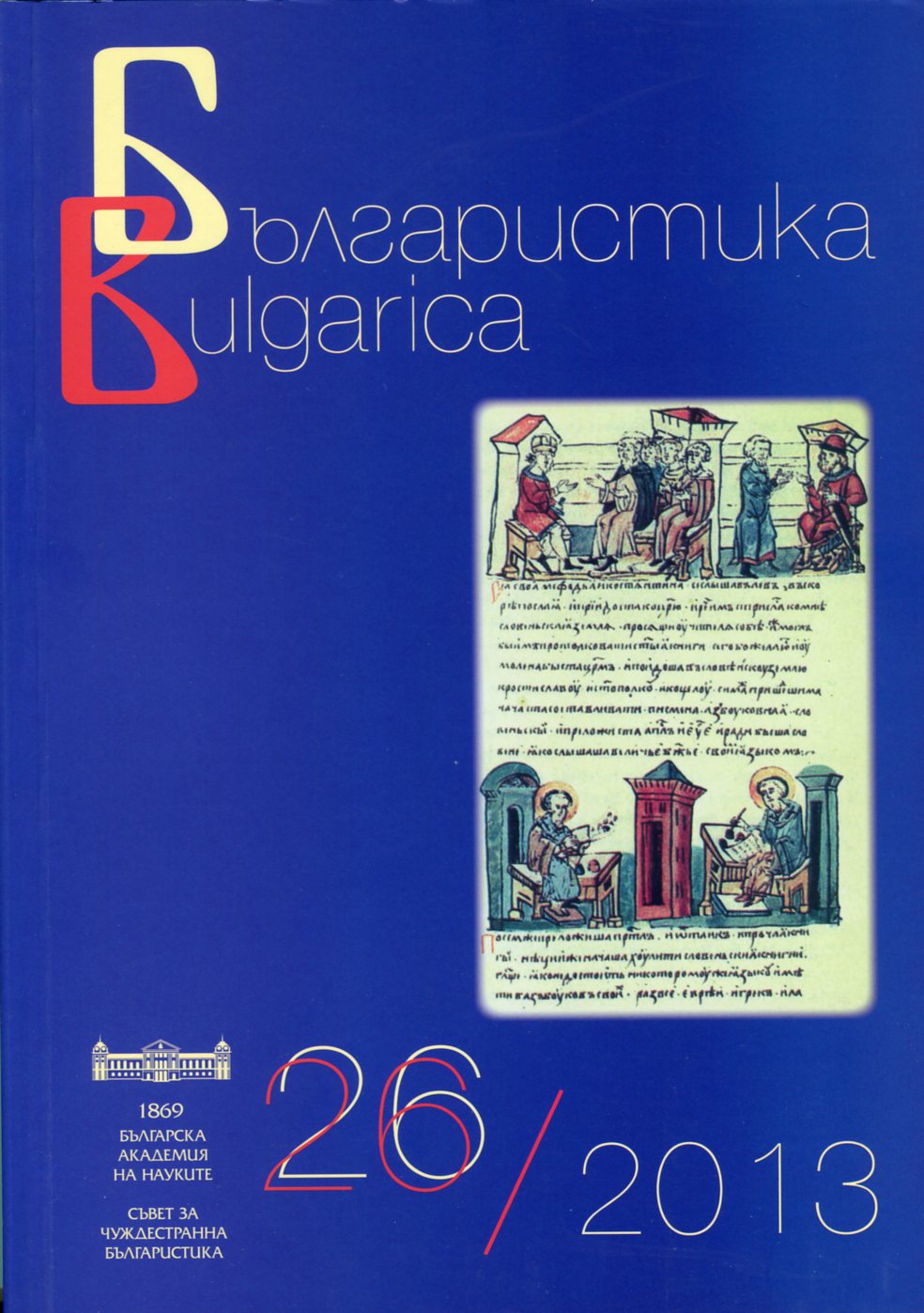
Defended PhD theses in Bulgaria in the field of linguistics, literature, history, folklore, ethnography and art studies.
More...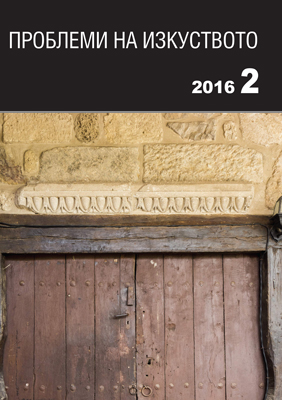
In the course of the restoration work launched in 2015 on the roofing, part of the authentic roof structure was discovered in the northeast corner of the building: a mound of earth thickly strewn with sherds of medieval pottery. Deep down in the mound, amphorae were unearthed, arranged upside down upon evening courses of brickwork. No such find is known to the authors on medieval sites within the contemporary Bulgarian lands. Descriptions of similar building techniques occur in publications on the Ochrid Church of St Sophia of the tenth or the eleventh century. Using pottery to reduce the weight of the structures has been described as a widely spread building method in Byzantium by its earliest explorers. Constructive use of amphorae occurs in Roman buildings between the fourth and the tenth centuries in ribbing small vaults and domes cast of slaked lime or plaster. Using pottery in construction of churches across Europe dates back to the tenth through the fourteenth century and beyond either as a method to improve the acoustics and/or reduce the weight of massive roof truses. The find from Nessebar has an apparent structural function to take the weight off the mould, meant to shape the slopes of the pitched roof.
More...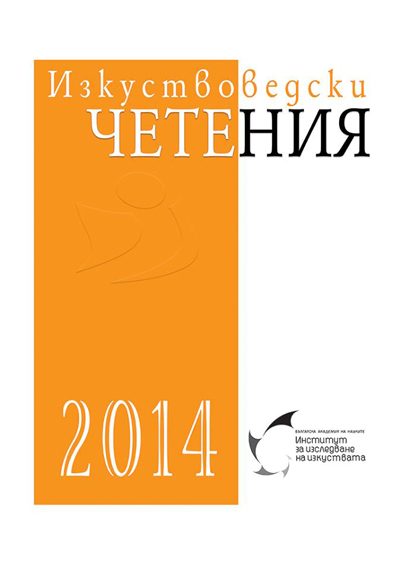

The expression postmodern culture occurs in many languages as synonymous with postmodernism. At the same time, ever since Lyotard published in 1979 his hypothesis and specified its two components – post-industrial society – postmodern age in culture – a theory of postmodernism has been developed. It distinguishes itself from other theories by its critical approach in relation to modernism. For this reason, postmodernism is generally regarded as being a challenge to the established order of understanding accepted by the academic fields of study. More precisely, theoretical postmodernism is a trend in various disciplines that seeks to revaluate (or reconceive) the foundational principles and concepts of the modern thought. “Post-modern culture” is one of those “post” terms that both designate and embody the idea of epochal shift from the modern to postmodern era. The view that music actively constructs ‘culture’ and ‘explains reality’ became possible with the publishing of works exhaustively arguing the contemporary (Western) reality in a combination of its quite different aspects. I call these models not only because these interpret/conceptualize our (“post”) modernity, but also because their followers in various disciplines (including musicology) undertake to further develop and argue the ideas practically. This essay offers a comparison between two types: programmatic and interpretative models for ‘postmodern culture’. A differentiation between theory, its term and the free use of ‘postmodern culture’ is necessary in musicology as well where interdisciplinary ideas are always there; while proper analytical criteria for ‘postmodern’ evaluation of musical composition are unevenly used by various schools. Still, these are certainly priorities in the movements of new musicology, socio-musicology and cultural musicology. The champions of ‘postmodern models of knowledge” in music advocate for adopting “a sceptical view of conceptual synthesis and aesthetic autonomy’ (Lawrence Kramer).This necessitates a type of analysis that stimulates a “deeper shift in the discipline” and leads the musicologists “to explore phenomena that previously had little or no place in musicology”, according to Martha Feldman. In more ambitious programmes, the analysis evolves into models of integration in sociological courses; their authors urge learning students to actively ‘apply sociological ideas to explain empirical reality’ (Jarl Ahlkvist).
More...
The article makes an analysis of the situation on the contemporary Bulgarian market as regards film distribution and film exhibition. The development of the sector is briefly traced from the late 1990s until now. The major factors for the ever-increasing number of viewers at cinema theatres are outlined. Some of the main reasons are given for the growing public interest in the recent Bulgarian feature films during the period. Using a comparative analysis, the main differences are sketched out, evincing the audiences’ interest in Bulgarian and American movies theatrically distributed in the recent years.
More...
The text analyses the results of an empirical fieldwork survey, which seeks to display how contemporary city dwellers in Bulgaria perceive and interpret the communicative messages of architectural works. It is a pilot survey, based on Charles Osgood’s method of the so-called semantic differential, which is applied here for the first time as an instrument in the field of architecture. In terms of its content, ensuring initial orientation and a general ‘mapping’ of the problematics is among the major contributions of the survey. Evaluation profiles of a series of significant architectural works were made. A comparative analysis was made of the evaluations of professional and unprofessional viewers of different categories of buildings. Methodically, a research approach and tools devised for the purpose were tested. Recommendations are provided for improving the methods when conducting further surveys in the same thematic field.
More...
Architecture creates artificial worlds. Illusion underlies the generative nature of architectural action. Understanding style as a permanent form and a visual sign of cultural oneness reflecting or projecting the inner form of collective thinking and feeling, suggests that stylistic differences are just degrees of development, a change in the ways in which illusions are created, tinted by the specifics of social relations. These are evidenced by the manifestations of architectural phenomena both of the days of Italian Renaissance and of the immediate contemporaneity with the new architectural style Parametricism introduced by Patrik Schumacher. The article draws an analogy, based on the strategies of creating spatial illusions, of their essence, the grounds for their creation and the logic of their persistent presence in architectural theory. Visual illusions and ambiguity are regarded as principles bound by the idea of beauty. Both six centuries ago and now, architecture would readily create notions and illusions that would have an emotional effect and convey subconsciously mass messages provoking positive reflections among their numerous audiences.
More...
The paper focuses on the cinematic presentation of the emotional atemporality in director Terrence Malick’s world. A historical analysis of his 2012 To the Wonder underlies this study. Love, quest for love and obsessive fear of losing it is what the storyline deals with. Malick delves deep into the intimate world of a couple in love, showing beyond speech and language – the coming, transformation and the end/endlessness of love, searching to study the intertwinement of imagination and reality; how the storyline is getting built and changed in the mind of both the protagonist and the viewer. The line between imagination and reality is constantly blurred and references to Christianity and faith render the story deep. A number of issues are raised of desire and passion, of which is ‘wrong’, of the generally accepted and ‘moral’ social behaviour.
More...
Unlike other regions of the world, the Balkans has not enjoyed the attention of many Western and American writers and filmmakers. The most obvious reason is that the region remained quite obscure. Moreover, the information on the Balkans has been scarce and therefore quite often the image is conventional and ultimately imbued with stereotypes. However, finally there are enough literary works and films on the Balkans and their characters. Besides screening literary works the films about the Balkans were born of three reasons: in order to portray several local historical figures, due to the need to locate romances, to use the negative reputation of the region or simply to tell adventurous travels in exotic places and even stories based on real facts. Obviously motivations could also mix.
More...
This paper examines the role of Bulgarian-born artist, Velislav Georgiev (1957 –), in transforming both his local and the wider Victorian landscape through his accessible and interactive artworks which invite the audience to experience the art object by engaging all five senses. Georgiev’s art practice in Australia stretches over 30 years and encompasses sculpture, painting, public art, furniture and architectural detail. Georgiev has created more than 28 public sculptures through which he engages in ongoing dialogue with a broad audience of all ages and backgrounds. These include a number of ‘play sculptures’, which encourage people to touch, feel, and immerse themselves in the pieces and also a number of collaborative pieces with a variety of ‘communities’ in which children, senior citizens, and members of disadvantaged groups have participated in the creative act. A current ongoing project in his home town of Ballan in western Victoria aims to bring the invisible to visibility by drawing attention to the workings of the wind. Georgiev is a founding figure in Ballan’s ‘1000 Weathervanes in Ballan’ project which has the ambitious aim of setting up 1,000 pieces of wind art in the draughty town. In March 2011 Georgiev’s Omnibus studio/ gallery participated in a joint exhibition with the National Museum of Earth and Man in Sofia, which grew out of the notion that Bulgaria and Australia are at the ‘opposite ends of the earth,’ so that if one were to drop a stone through the centre of the earth in Bulgaria, it ‘would most likely land in central Australia.’
More...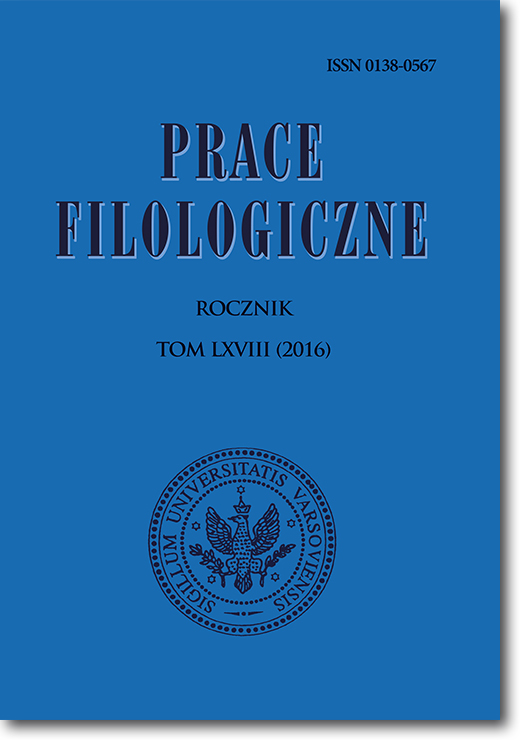
The paper presents findings of an analysis of phonetic, inflective and syntactic identifiers of Eastern Borderland stylization, as used in one of the most popular Polish comedy films of the 1960s, Sami swoi, directed by Sylwester Chęciński. The material excerpted from its dialogues is confronted with texts originating in the villages Boryczówka and Niemirów, and also with findings of a research into the Polish language of South-Eastern Borderlands.
More...